When it comes to the culinary heritage of Hanoi, no dish is more emblematic than bun cha Hanoi. This iconic Vietnamese meal, consisting of grilled pork, rice noodles, and a savory, tangy dipping sauce, has captured the hearts and taste buds of people around the world. However, it’s not just a local favorite; bun cha’s well-deserved recognition from prestigious platforms like the Michelin Guide attests to its global appeal and exceptional quality. In this comprehensive guide, we’ll explore the fascinating history of bun cha, its components, and Michelin-recognized restaurants in Hanoi. We’ll also delve into various serving techniques, cultural significance, and modern twists that have kept the dish relevant through the years.
Watch the video summarizing the article “Bun Cha Hanoi: A Michelin Guide to Hanoi’s iconic dish”
The history of bun cha
Bun cha’s evolution into a Michelin-recognized dish is a tale of humble beginnings, gradual evolution, and global fame.
Origins in hanoi’s street food culture
The origins of bun cha can be traced back to the buzzing streets of Hanoi, where vendors would traditionally prepare and sell the dish from makeshift grills. These street vendors, often small family operations, would set up their stalls in Hanoi’s bustling Old Quarter. The pork would be grilled over charcoal, lending it a smoky and deeply satisfying flavor. The fragrant aroma would waft through the alleys, attracting people from all walks of life. This accessibility and affordability made bun cha a staple in the local diet.
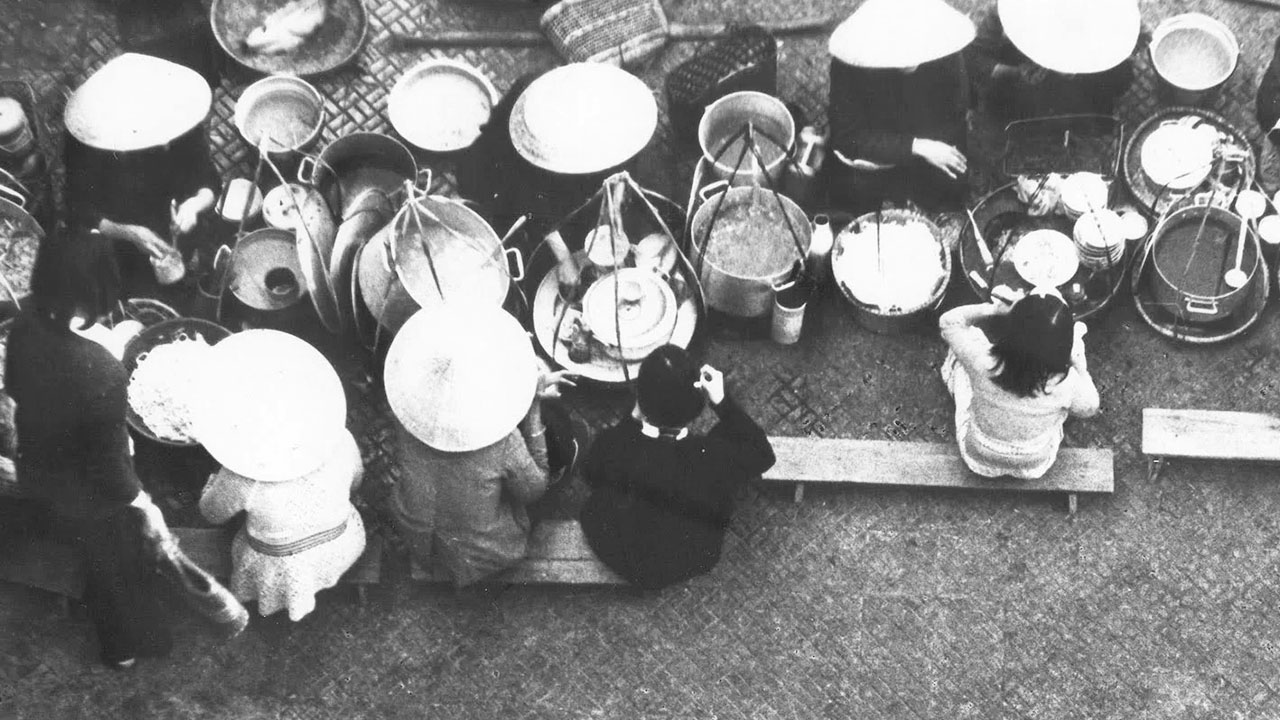
Evolution and popularity over time
Throughout the years, the dish has remained largely unchanged but has gone through various refinements. Influenced by French colonial rule, chefs started incorporating techniques such as pâté making and charcuterie methods, giving rise to more sophisticated versions of the pork patties and dipping sauce. These eastern and western culinary methods amalgamated to create the contemporary bun cha recipe.
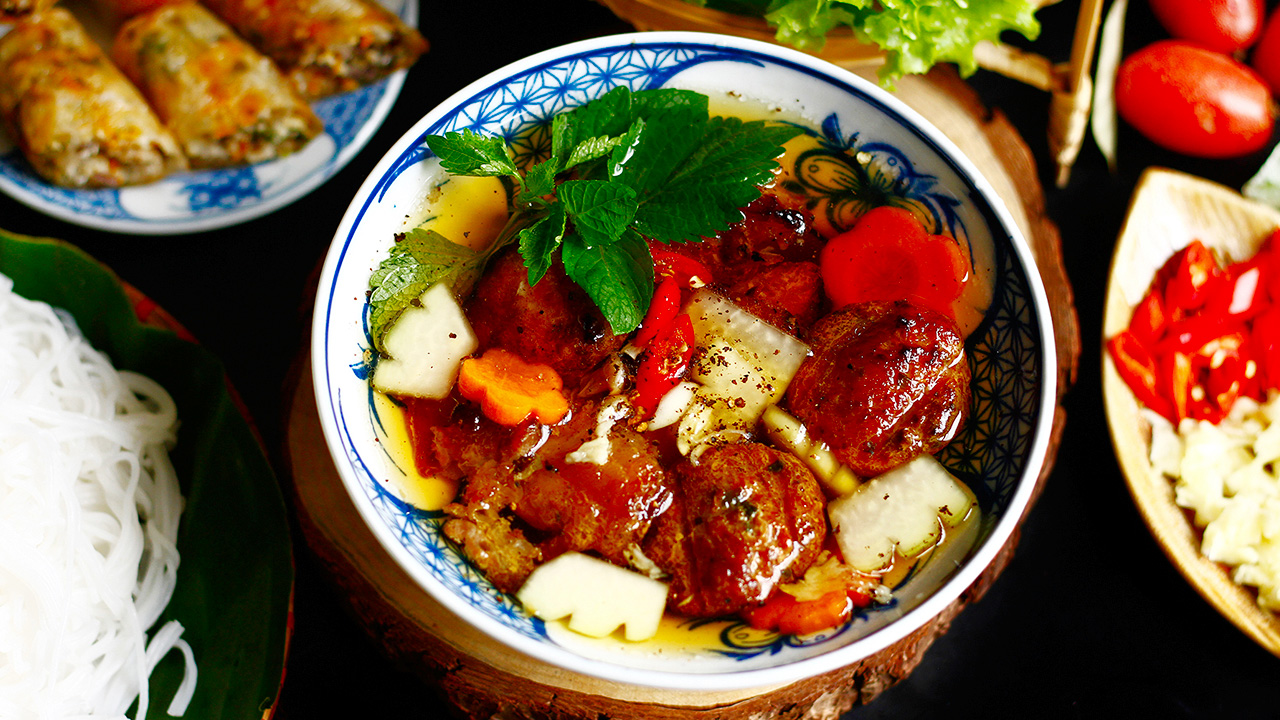
During the wartime era, resource constraints pushed cooks to use alternative ingredients while maintaining the essence of the dish. This adaptability and resilience became a hallmark of bun cha, keeping its spirit alive even during hard times.
In the modern era, bun cha has seen a mixture of street-food authenticity and upscale refinement. Restaurants introduced regional herbs, high-quality local ingredients, and careful smoking techniques to add layers of complexity to the flavors. This amalgamation attracted a new demographic, transforming bun cha from a simple street food to a gourmet delicacy.
Bun cha’s rise to global fame
Bun cha gained international celebrity status when former U.S. President Barack Obama and the late Anthony Bourdain dined together at Bun Cha Huong Lien in 2016. This pivotal moment was broadcasted on Bourdain’s TV show “Parts Unknown,” propelling the dish and the restaurant into the international spotlight. Since then, food enthusiasts from around the globe flock to Hanoi to experience bun cha in its authentic form.
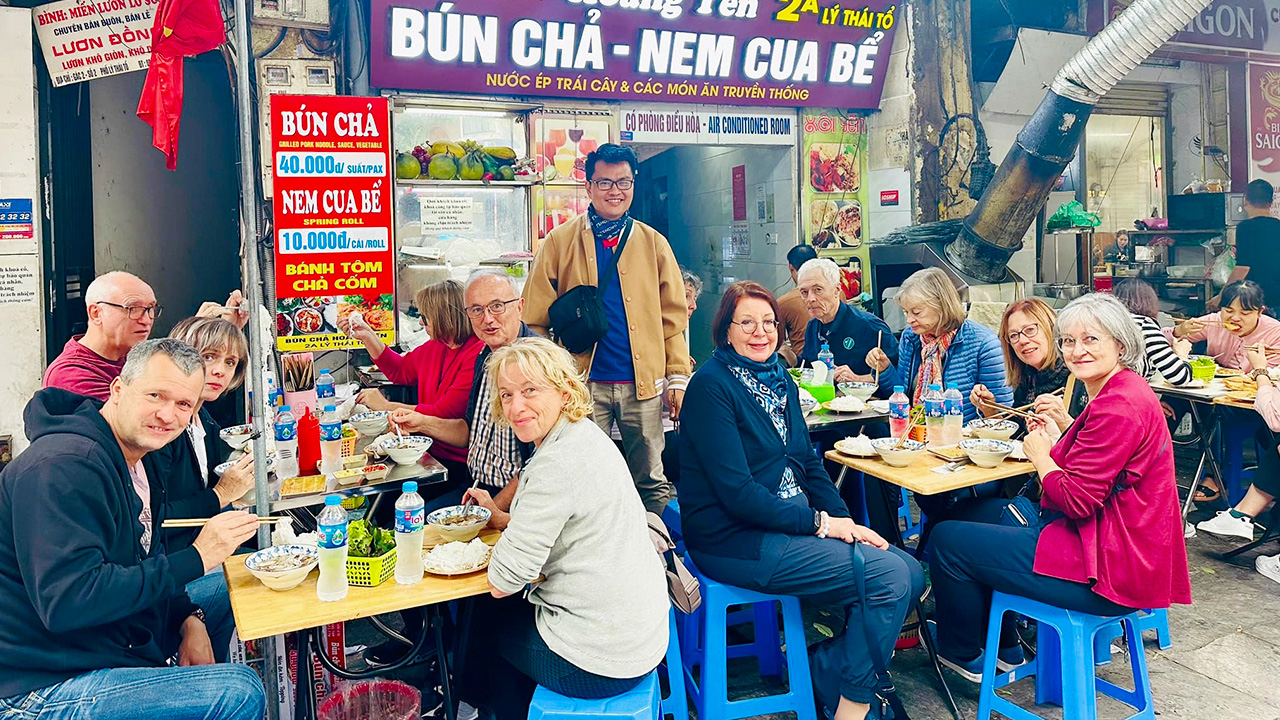
Moreover, recognition by the Michelin Guide has cemented its status. Esteemed bun cha restaurants, revered for their culinary excellence and adherence to tradition, have garnered Michelin mentions and Bib Gourmand awards, further elevating the dish’s prestige.
Michelin-recognized bun cha restaurants in Hanoi
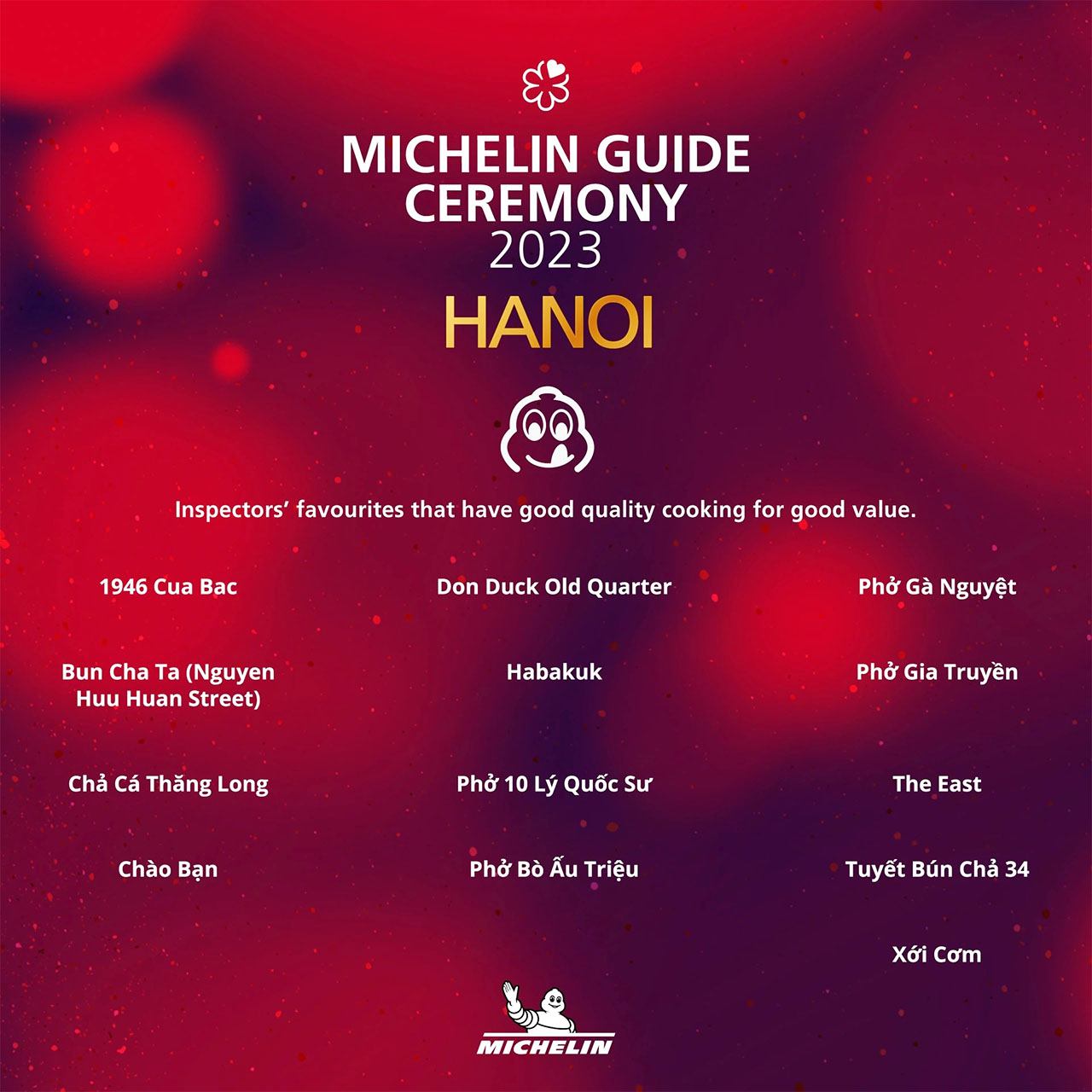
While countless eateries serve bun cha in Hanoi, a few have stood out due to their unparalleled quality, consistency, and historical significance. Here’s a rundown of some Michelin-recognized establishments:
Bún Chả Hương Liên (Bun cha Obama)
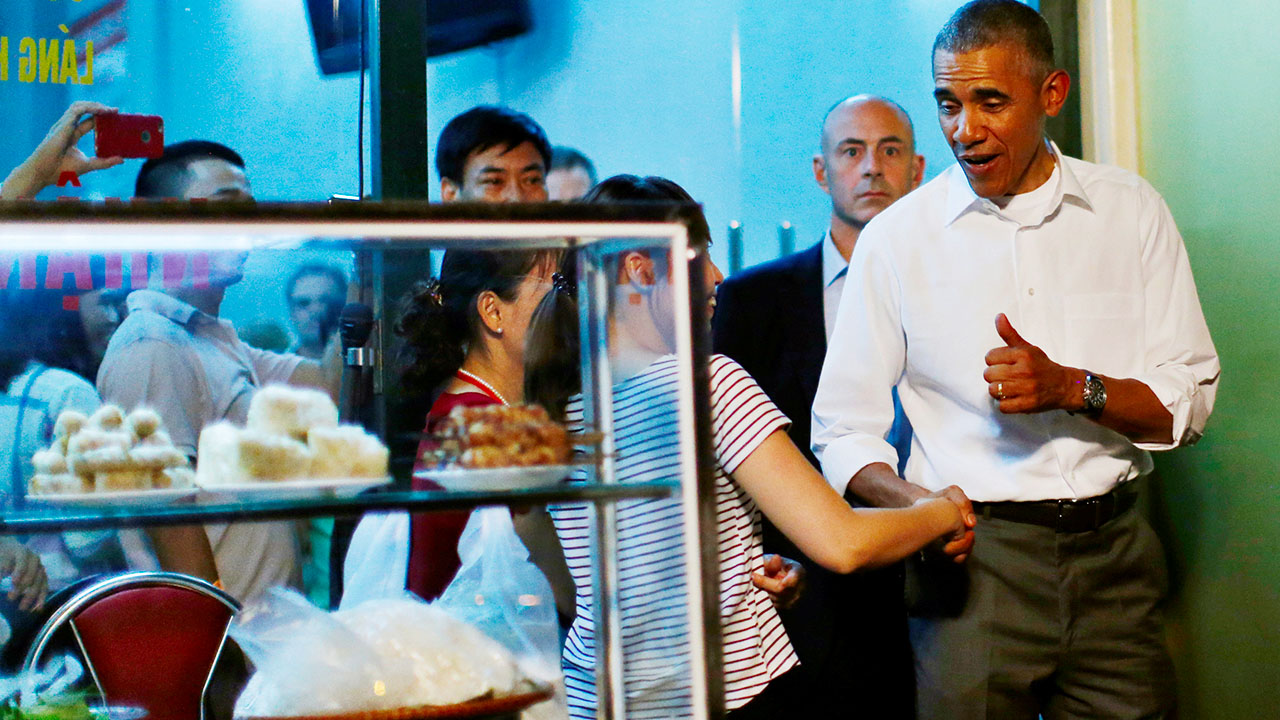
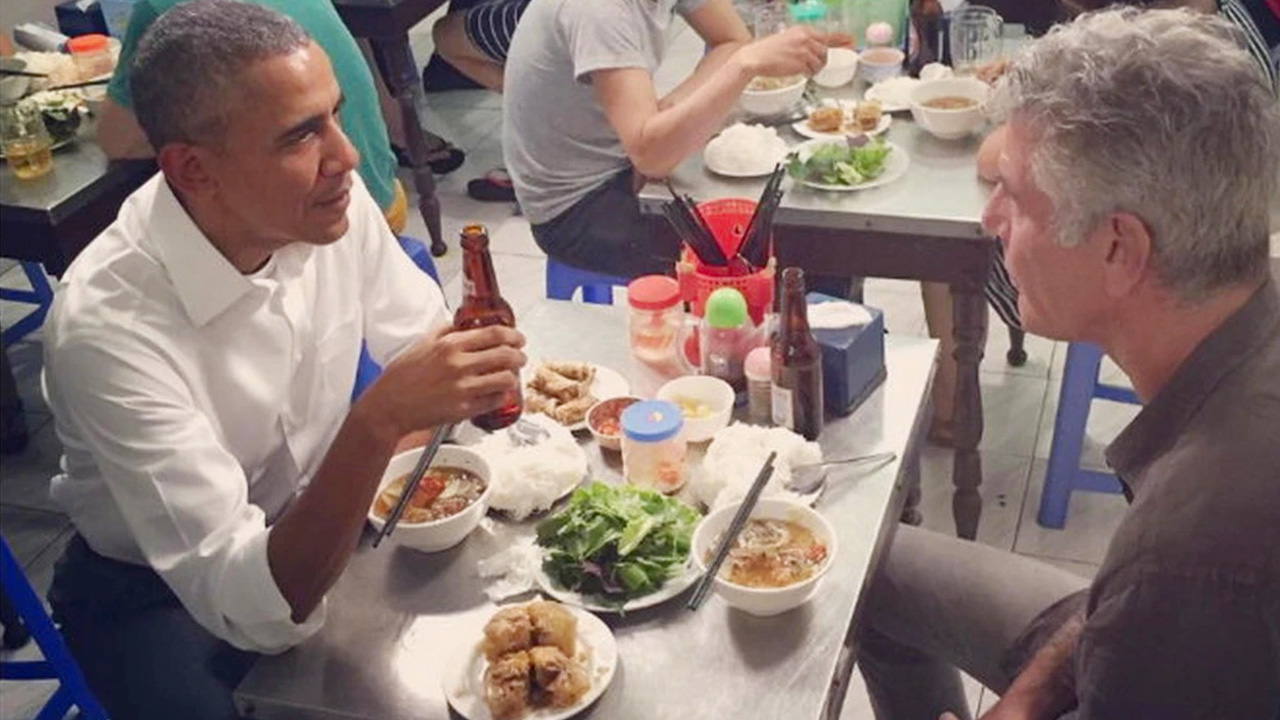
Bún Chả Hương Liên, famously known as Bun Cha Obama owes much of its fame to the endorsement it received from Barack Obama and Anthony Bourdain’s 2016 visit. The restaurant serves traditional bun cha graced with perfectly marinated and grilled pork. It’s not just the history but the flavor that keeps patrons returning. Their broth is an exquisite blend of sweet, sour, and savory notes, enhancing the smoky grilled pork and chewy noodles.
- Address: 24 Lê Văn Hưu, Hai Bà Trưng, Hanoi
- Hours: 8:00 AM – 9:00 PM
- Phone: 024 3943 4106
Bún Chả Ta (Nguyen Huu Huan Street)

Bún Chả Ta is a Michelin Bib Gourmand restaurant lauded for its exceptional quality and affordability. Nestled in the lively Nguyễn Hữu Huân Street, this establishment offers well-seasoned pork patties and spring rolls that add a unique crunch. The dipping sauce combined with crispy spring rolls makes for an unforgettable culinary experience.
- Address: 21 Nguyễn Hữu Huân Street, Hoàn Kiếm, Hanoi
- Hours: 8:00 AM – 10:00 PM
- Phone: 0966 848 389
Bún Chả Đắc Kim (Hang Manh Street)
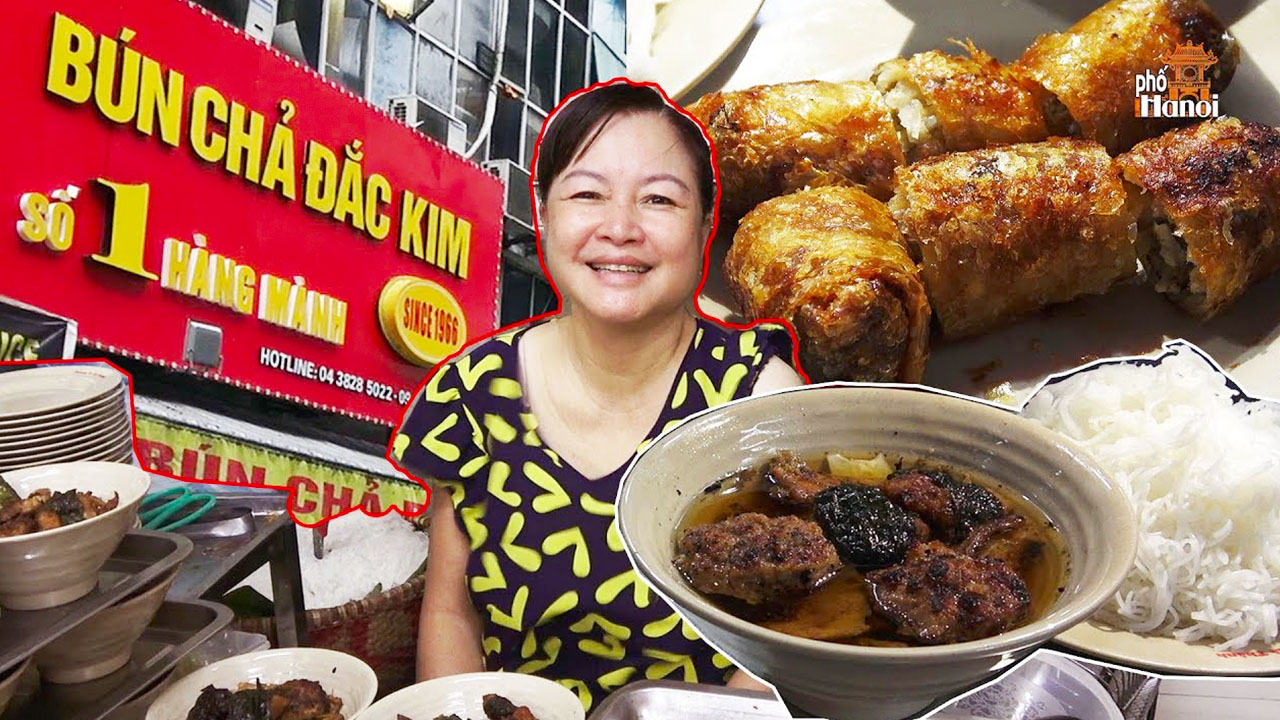
One of the oldest bun cha restaurants in Hanoi, Bún Chả Đắc Kim, has been serving this iconic dish for over 50 years. Recognized by CNN Travel, it has remained faithful to its traditional recipes. What sets this place apart is the special broth and well-marinated, perfectly grilled pork. Their attention to detail in keeping the authentic flavors intact has made it a favorite among locals and tourists alike.
- Address: 1 Hàng Mành Street, Hoàn Kiếm, Hanoi
- Hours: 9:00 AM – 9:00 PM
- Phone: 024 3828 7060
Tuyết Bún Chả 34 (Hang Than Street)
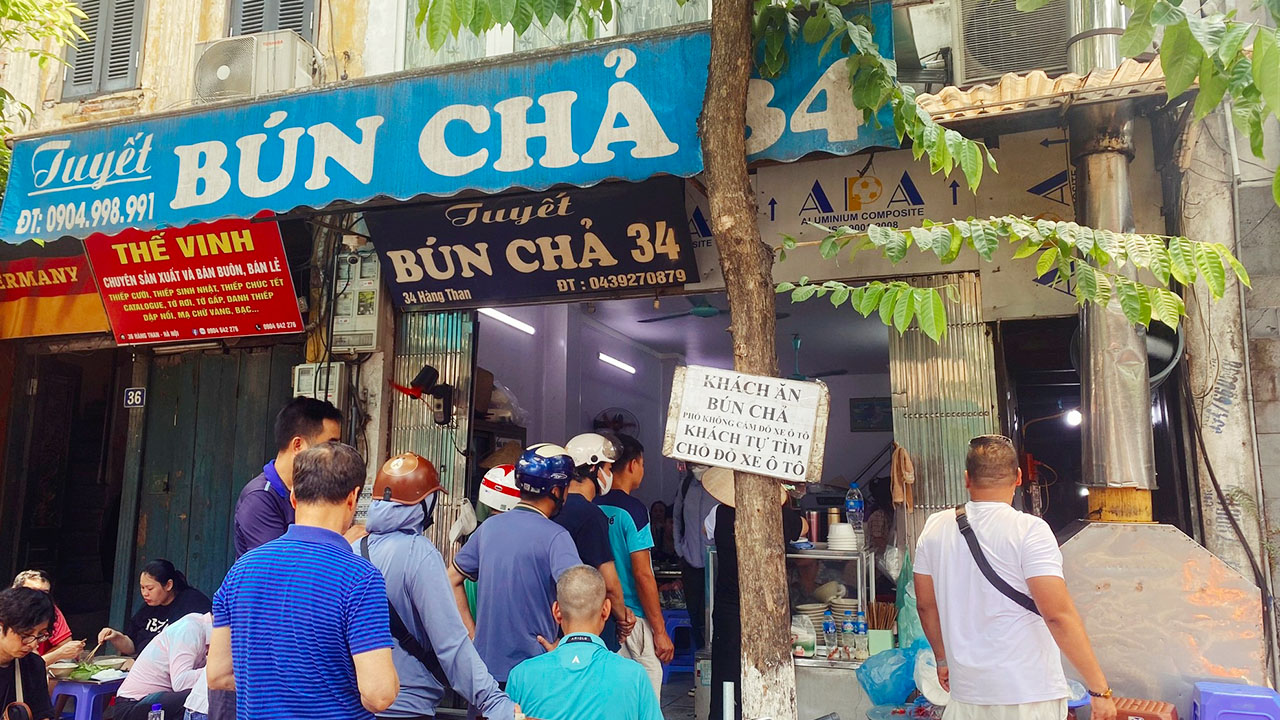
Tuyết Bún Chả 34 has been awarded the Michelin Bib Gourmand label for its dedication to quality and flavor. The restaurant specializes in delivering an exquisite version of bun cha that maintains affordability without compromising on taste. The rice noodles here soak up the flavorful broth beautifully, enhancing the overall dish.
- Address: 34 Hang Than Street, Hanoi
- Hours: 9:00 AM – 9:00 PM
- Phone: 0981 107 743
The components of bun cha: a culinary breakdown
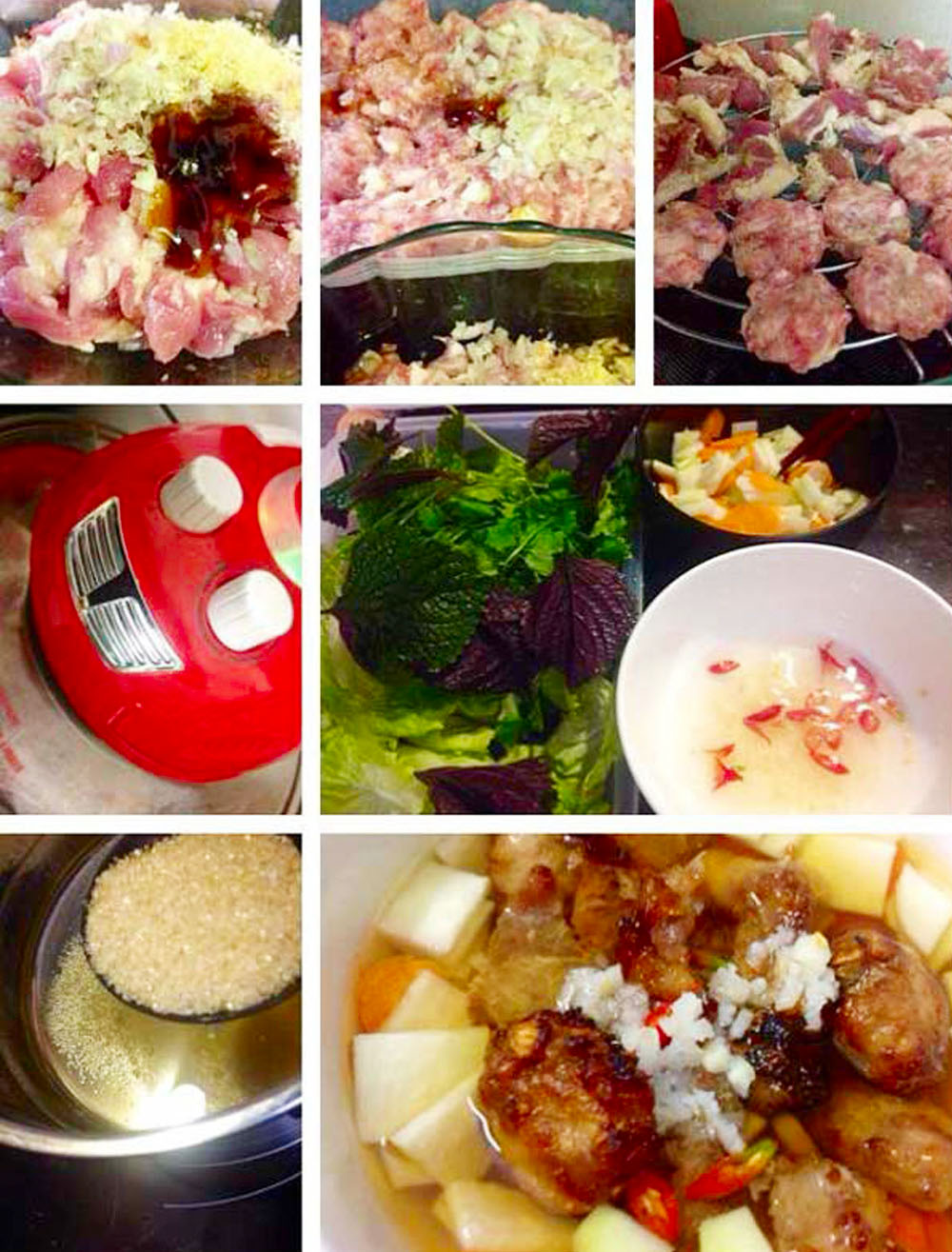
At its core, Bun Cha is a simple dish. However, the beauty lies in the perfect harmony of its components, each playing a critical role in delivering the dish’s signature flavors.
Grilled pork: the heart of the dish
The centerpiece of bun cha is undeniably the grilled pork. This usually includes two types: minced pork patties and slices of pork belly. The pork is marinated in a mixture of fish sauce, garlic, shallots, sugar, and various Eastern spices. Grilled over charcoal, the meat attains a smoky, caramelized flavor that is integral to bun cha’s identity. The blend of lean and fatty cuts creates a dynamic range of textures, from the juiciness of the pork belly to the firm bite of the patties.
Rice noodles: the perfect accompaniment
Rice noodles, or “bun,” are the main carbohydrate component of bun cha. These noodles are typically thin, long, and slightly chewy, providing the perfect backdrop for the rich flavors of the grilled pork and dipping sauce. Fresh noodles are ideal, but dried ones can be used if cooked properly. The simplicity of the noodles allows them to absorb and complement the complex flavors around them, rather than overpower the dish.
Dipping sauce: a symphony of flavors
The dipping sauce, known as nước chấm, is a symphony of flavors and the true essence of the dish. It balances sweet, sour, salty, and spicy notes to create a multifaceted experience. Typically, it’s made from a combination of fish sauce, lime juice or rice vinegar, water, sugar, and minced garlic and chilies. Some variations may also include shredded carrots and green papaya, adding a crunchy texture and slight tartness to the mix. This sauce enhances the flavor of the grilled pork and noodles while adding its unique zing.
Bun cha: a culinary experience
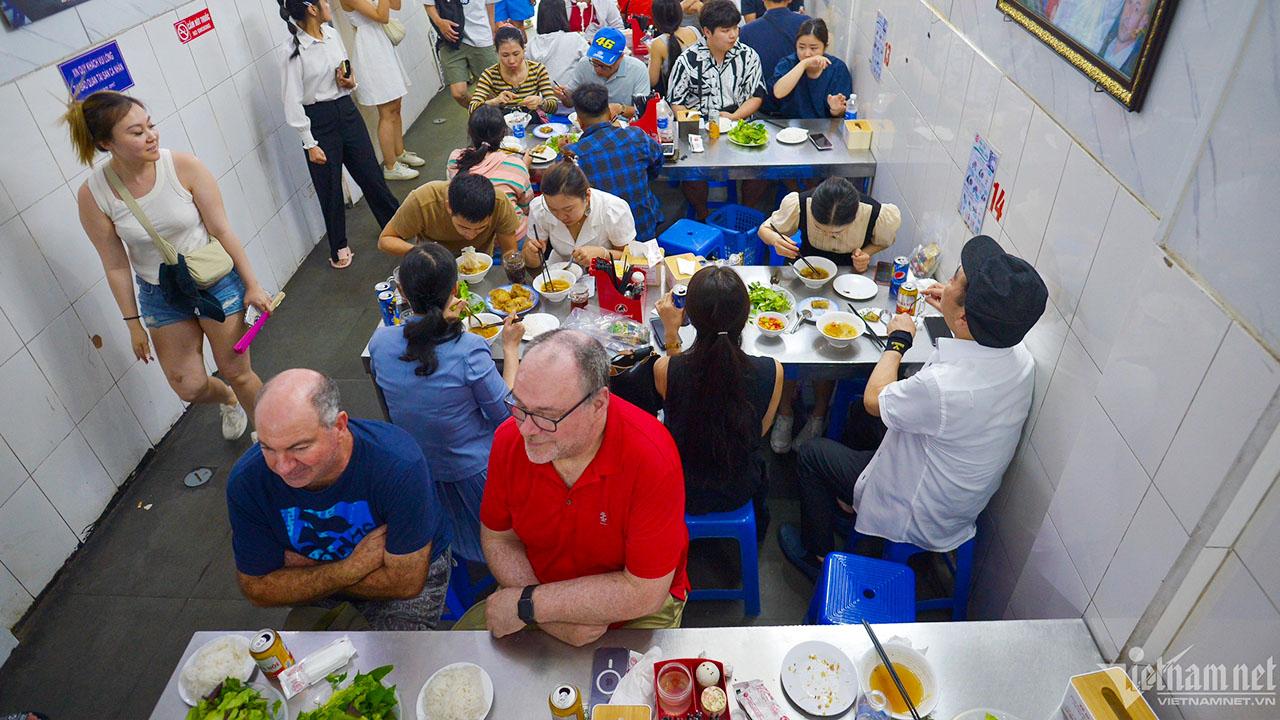
The art of preparing and enjoying bun cha goes beyond mere ingredients. It encompasses the harmony of flavors, textures, and even the cultural significance associated with it.
The art of assembling a bun cha bowl
To assemble a perfect bun cha bowl, start by placing a generous portion of cooked rice noodles at the bottom. Next, top it with freshly grilled pork patties and slices of pork belly. Add pickled vegetables such as green papaya, carrots, and turnip for a crunchy texture that cuts through the richness of the meat. Garnish with fresh herbs like cilantro, Thai basil, and lettuce. Finally, serve the dipping sauce on the side, allowing diners to adjust the level of flavor intensity according to their preference.
The perfect bite: a balance of flavors
Achieving the perfect bite involves an intricate balance of flavors and textures. Begin by dipping the noodles, herbs, and vegetables into the flavorful sauce to soak up the essence. Then, combine a bit of everything—noodles, pork, herbs, and vegetables—in a single bite. The interplay of sweet, sour, salty, and slightly spicy ingredients, along with the textural contrast of chewy noodles, tender pork, and crunchy vegetables, creates a sublime experience that will delight your palate.
Bun cha’s cultural significance in hanoi
Bun cha is more than just a dish; it’s a significant cultural artifact representing Hanoi’s rich culinary legacy. Historically, it served as a common thread uniting people from various walks of life. Whether enjoyed in a high-end restaurant or a modest street side stall, the dish encapsulates the soul of Hanoi. The shared experience of eating bun cha fosters community and belonging, making it an integral part of social and cultural life in the city.
Beyond the basics: exploring bun cha variations
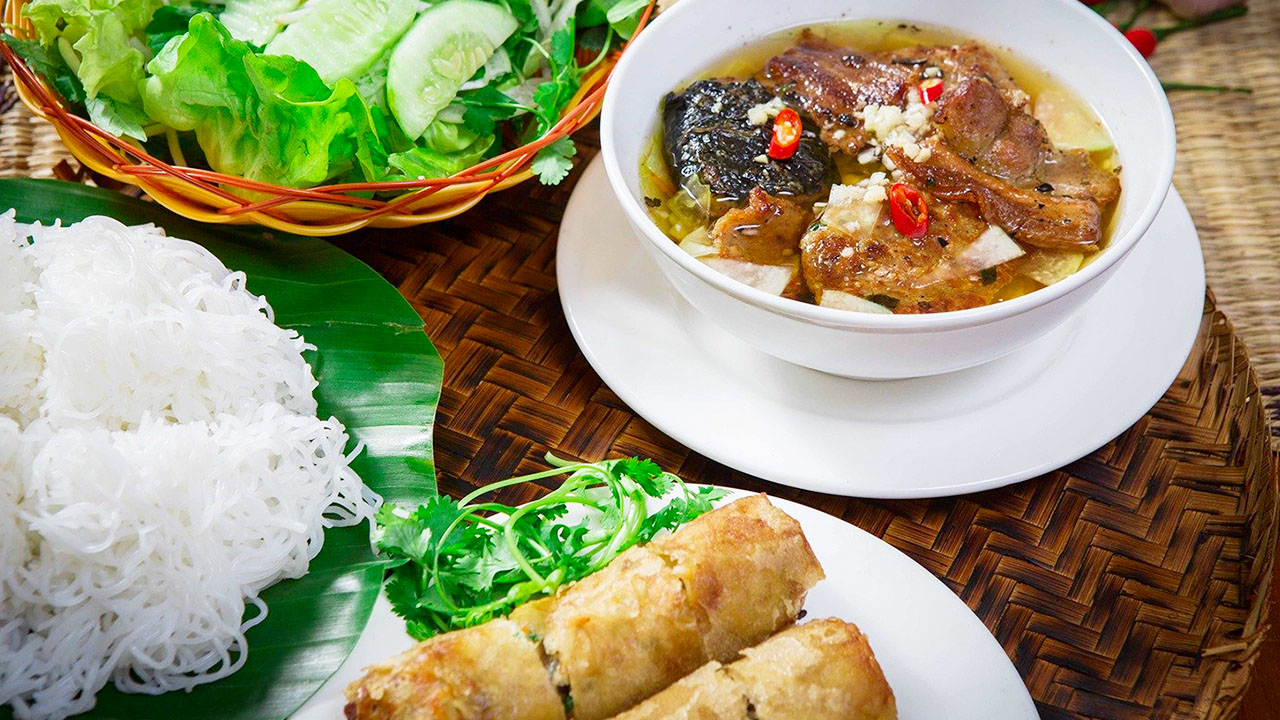
While traditional bun cha remains a beloved staple, various adaptations and innovations have emerged over time, each adding unique twists to this classic dish.
Bun cha with seafood roll: the “combo Obama”
The “Combo Obama” has become a cultural phenomenon, combining traditional bun cha with seafood spring rolls and a refreshing Hanoi beer. This meal gained fame after Barack Obama’s visit to Hanoi and has since become a popular menu item at multiple restaurants, especially Bun Cha Huong Lien. The seafood rolls add an additional layer of texture and flavor, perfectly complementing the smoky, savory pork and chewy noodles.
Bun cha with fried spring rolls: a crispy delight
Another delightful variation is bun cha served with fried spring rolls, known locally as nem ran or cha gio. These crispy rolls, stuffed with minced pork, vermicelli, and mushrooms, add a delectable crunch to the dish. Dipped in the same tangy sauce, the contrast between the soft noodles and the crispy spring rolls provides a satisfying texture combination.
Regional variations of bun cha
Bun cha shows regional variations across Vietnam. In Central Vietnam, bun cha is often paired with banh mi (Vietnamese baguette), making the meal heartier. Here, the grilled pork is frequently seasoned with turmeric, imparting a distinct yellow hue and a slightly different flavor profile. Moving south, the dish may be accompanied by additional pickled vegetables or a sweeter sauce, which caters to the local palate. Despite these regional twists, the core elements—grilled pork, rice noodles, fresh herbs, and dipping sauce—remain steadfast, symbolizing unity in diversity.
Bun cha: a culinary journey for all
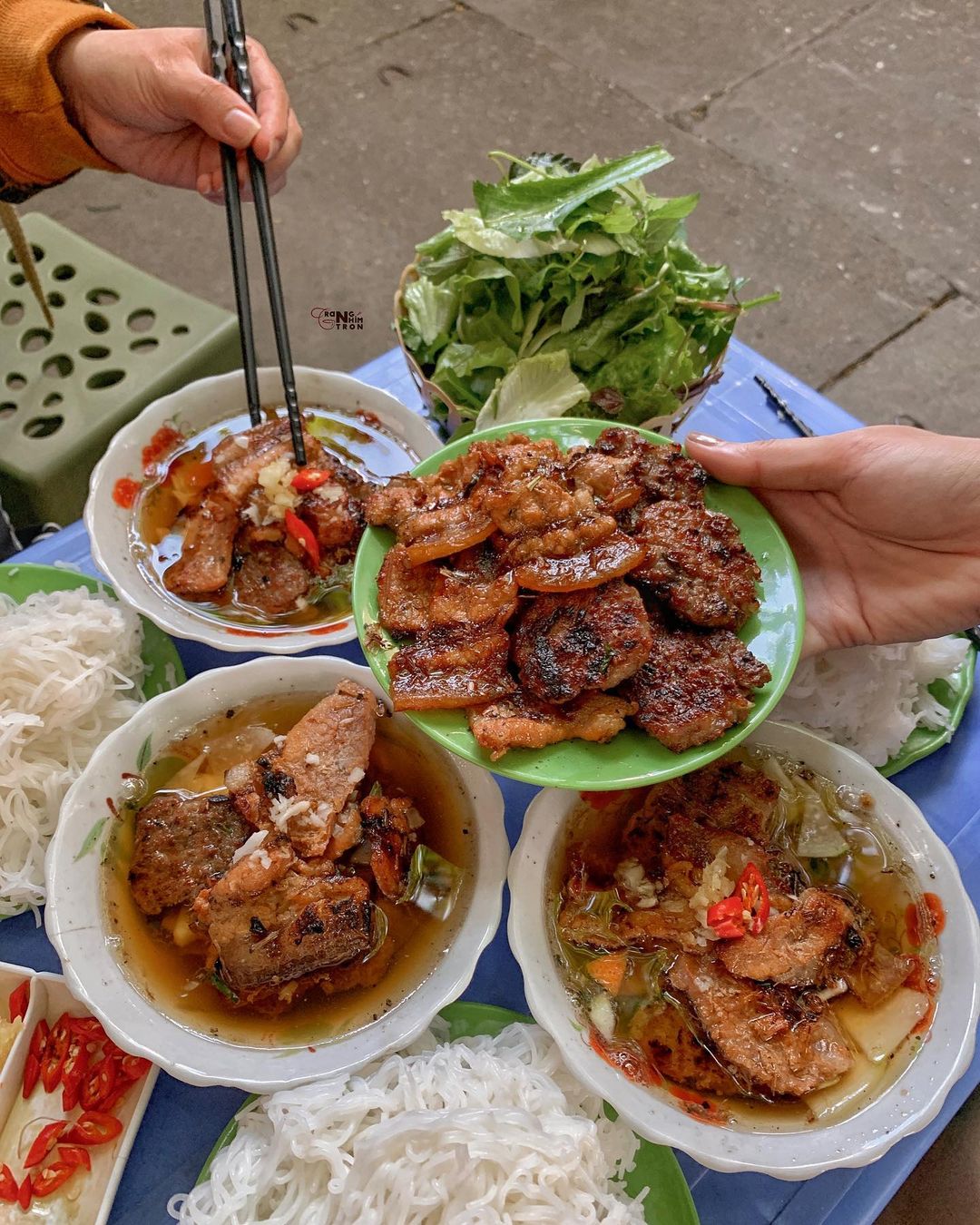
Bun cha’s enduring appeal is a testament to its versatility and inherent deliciousness. It’s a dish that transcends time and borders, continuously captivating both local and international audiences.
Finding the best bun cha in hanoi: a foodie’s guide
Navigating Hanoi’s vibrant culinary scene can be overwhelming, but here are some recommendations to make your search for the best bun cha easier:
- Bun Cha Hang Quat: Known for its flavorful grilled pork and generous portions. Located at 74 Hang Fan Street, it’s a must-visit.
- Bun Cha Huong Lien: Also known as “Bun Cha Obama,” it’s an essential pit stop for any bun cha lover.
- Bun Cha Sinh Tu: This family-owned establishment has been serving traditional bun cha for generations and even offers a vegetarian version.
- Bun Cha Hanoi Dac Kim: Famous for its premium ingredients and authentic flavors. Located in the Hanoi Old Quarter, this is a place you shouldn’t miss.
- Bun Cha 34 Hang Than: A hidden gem loved by locals, ensuring an authentic dining experience.
Bun cha: a must-try for visitors to hanoi
For tourists, bun cha isn’t just a meal; it’s an essential Hanoi experience. The combination of vibrant street culture, incredible flavors, and a sense of community makes it a must-try. Sampling bun cha at one of the Michelin-recognized establishments or a renowned street stall should be on every traveler’s itinerary.
Bun cha: a culinary experience that transcends time
Bun cha is a manifestation of Hanoi’s culinary heritage and an emblem of Vietnamese culture. Its journey from humble street food to a global sensation is a testament to its delicious complexity and cultural importance. Though it has branched out into various modern interpretations, the heart of bun cha remains unchanged. It’s a culinary experience that transcends time, providing a delicious link to Hanoi’s rich past and a bright future in global cuisine.
In essence, whether you’re a seasoned foodie or a curious traveler, bun cha offers an experience that is both timeless and unforgettable. This dish embodies the spirit of Hanoi, encapsulating resilience, community, and an enduring love for exquisite flavors.


